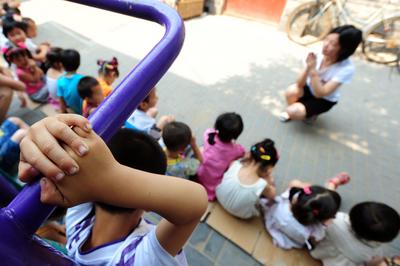In contemporary China, efforts to equalise basic public services focus on the three spheres of public health, public education and social security.
‘Equalisation’ refers to the establishment of a base-line for a service and the attainment of an ‘approximate equalisation’, rather than a complete and fully achieved equal standard for all. Specifically, the equalisation of basic public services can refer to citizens having approximately equal opportunity to enjoy basic public services; to citizens enjoying a real equal level of basic public services; and to equalisation across the city-country divide, and between the eastern and western regions.
At present, government revenues to provide basic public services are distributed unevenly between the central and local governments. Since the tax distribution system was set in 1994, the central government has been responsible for 50 per cent of all public revenues. Despite this, it has provided less than 10 per cent of the funding for the three basic public service spheres of compulsory education, public health and social security. Ninety per cent of the fiscal investment in these areas is carried out by local governments.
Differences in revenue between regions ensure that the level of basic public services provided across those regions will not be equal. For the most part, the level and quality of public services in the developed eastern regions are much higher than in the less-developed western regions. This phenomenon is very clear in the three public services spheres under discussion.
The current system of transferring revenue inhibits the provision of basic public services on a more equal footing. Not only does it fail to promote equal distribution of basic services, but it has also widened regional differences in service provision.
If China wants to achieve the goal of delivering public education, public health and social security at equal level across the nation, then the central and provincial governments should assume equal fiscal responsibility for providing these services. To this end, financial and administrative powers should be redistributed between the central and local governments until they match each other, and the current system of public revenue transfer should be reformed.
To achieve this, the existing system of tax revenue return should be gradually abolished. All general revenue transfer items should be integrated, bringing their attributes and functions into play. In addition, special revenue transfer programs should be strictly limited, and a better system of sub-provincial revenue transfer developed. It would also be profitable to explore a new system of revenue transfer which combines the current vertical and horizontal transfer systems.
Jing Min is Associate Professor at the Department of Politics and Law, Chinese Central Party School, Beijing.
This article was published in the most recent edition of the East Asia Forum Quarterly, ‘Governing China’.

